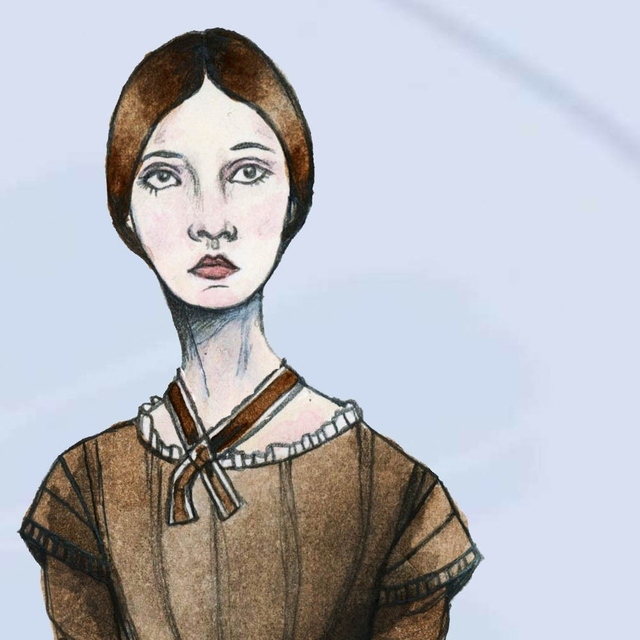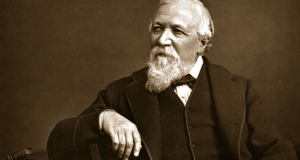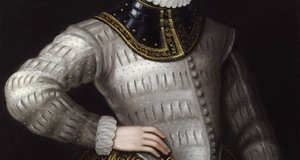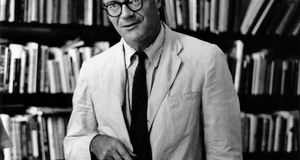Emily Dickinson's 'My Life had stood-a Loaded Gun-': Revealing the Power of a Woman's Words
By
2011, Vol. 3 No. 09 | pg. 1/1
KEYWORDS:
Born in 1830 to Calvinist parents in Massachusetts, Emily Dickinson is renowned as one of America’s greatest poets. Though her poems often focused on death, she in fact wrote on many subjects. Life, nature, love, science, heaven, hell, religion, writing, and longing are just a few of the topics she explored. In many cases her poems seems to have a straightforward message spelled out so that even those who are unfamiliar with poetry are able to see her meaning. At other times, Dickinson’s poetry can seem confusing or strange to even the most careful reader. In such instances it is necessary to sift through the clues she leaves in her words in order to decipher the hidden meaning. Her seemingly random capitalization, lack of punctuation or obsession with dashes, and incorrect use of grammar were all done deliberately, sometimes to highlight the message that would have otherwise gone unheeded. One such poem which has multiple meanings is “My Life had stood—a Loaded Gun—.” To the average reader, Emily Dickinson’s “My Life had stood—a Loaded Gun—” personifies a gun, but several metaphorical clues lead to a second meaning and message: a woman and her words have great power. Throughout her work, one can see that Dickinson does not seem to care about what is socially accepted. She does not shy away from subjects like religion and/or heaven and hell, which could be considered the most controversial of the time and which other authors and poets (and women in particular) may have avoided for that reason. In her poems, instead of trying to hide her dislike of organized religion, she did the opposite and flaunted her views. “Some keep the Sabbath going to church” and “I’m ceded—I’ve stopped being Theirs—” are perfect examples of this. All the same, some of her poems do contain hidden meanings which aren’t necessarily obvious.Emily Dickinson (1830 - 1886) was an American poet whose work became known only posthumously. Her poetry is recognized today for its non-standard form and often unusual syntax. Image: artistic rendering of Emily Dickinson by Lisa Perrin. Emily Dickinson rarely published her poems but it was not because she was afraid of criticism, rather that she was unhappy with the editing that her poems went through by those to whom she sent them. If she was not afraid of criticism, it is likely she simply enjoyed creating poems with double meanings. “My Life had stood—a Loaded Gun—,” written in alternating lines of iambic trimeter and tetrameter and with stanza rhymes of either abcb or abcd, is all the more interesting for its two meanings. The first line immediately includes a caesura and sets the stage for the literal meaning of the six stanza poem (1). “My Life” is the subject of the line, and subsequently becomes the subject of the poem (1). Yet the narrator or persona of the poem is actually the gun, as indicated after the enjambment of the second line: “The Owner passed—identified—/ And carried Me away—” (3-4). The “Me” is the gun (4). To paraphrase, the gun stayed in the corner until its owner came and took it. On the other hand, if one looks deeper into these lines, a connection can be made to a woman and her words. The “My Life” becomes a woman’s life, while the “Loaded Gun” indicates the potential power and danger that a woman has. All four words are capitalized, and though “Loaded” has one more syllable, in the line they almost become parallel or equivalent to each other. The woman has stood “In Corners” until her “Owner,” or husband, “identified” or chose her and “carried” her away (2-4). Dickinson is saying that women are powerful, but are the tools of men and often have no choice other than to wait for marriage. The second stanza tells what the personified gun does. Dickinson uses anaphora in the beginning lines to stress the change that has occurred. “We” refers to the gun and its owner, plainly stating that they “roam in Sovreign Woods—” and “hunt the Doe—,” or go through the woods and hunt deer (5-6). The enjambed “every time I speak for Him” refers to when the gun is shot, and “The Mountains straight reply—” is the sound of the shot hitting off the mountains and returning (echoing) back to the gun and its owner (7-8). This meaning is obvious, despite the figurative language about the mountains echoing. As for the second meaning about a woman’s words, there are some large clues in this stanza. “Sovreign” often indicates one with supreme power and authority, and in this case refers to men (5). The “We roam in Sovreign Woods—” refers to the husband and wife being in man’s world (5). The “We hunt the Doe—” was carefully worded by Dickinson (6). “Doe” could as easily have been replaced with “deer” or “buck,” but it was the female of the species that was chosen (6). This line means that females are killed in the world of men, or the power of the female is killed. The men cannot allow the females to get too powerful. When the female does “speak for Him,” “The Mountains straight reply—” (7-8). Dickinson is saying that when a woman makes a decision that is normally a man’s or ventures to write something (venturing into the territory men believe belongs to them), she gets nowhere. One could read these lines as either the woman’s way is blocked by a wall (“Mountains”), or that she is instantly met with criticism (“straight reply”) (8). The two interpretations continue into the third stanza. The “smile” and “light” that “Upon the Valley glow—” indicate the gun’s spark and flash as it goes off (9-10). “It is as a Vesuvian face/ Had let it’s pleasure through” compares the spark and flash to a sudden and violent outburst like Vesuvius erupting (11-12). The meaning of the stanza changes if the persona is a woman. The “smile” and “cordial light” could be the polite mask a woman must wear in a man’s world, or even the lovely appearance of her poetry (9). The “Vesuvian face” letting “its pleasure through-” however, may be a reference to a woman exploding through writing and letting her words through (11-12). A vesuvian was also known as a slow burning match that was used to light cigars, and Dickinson could have meant to indicate that the power of a woman’s words, once released, do not easily fade (“vesuvian”). Returning to the gun’s story, the fourth stanza tells of what the gun does at the end of the day. Dickinson uses alliteration more in this stanza than anywhere else in the poem, with “Day done,” “My Master’s,” and “Duck’s Deep” using repeated sounds. In the first line of this stanza, Dickinson also plays around with language and structure by using both “Night” and “Day” (13). “I guard my Master’s Head—/ ‘Tis better than the Eider Duck’s/ Deep Pillow—to have shared—” refers to the gun’s placement at night (14-16). The gun is above its “Master’s Head,” perhaps on the wall, and believes that is a better place to be as opposed to the “Eider Duck’s” pillow they could “have shared” (14-16). The alternate meaning shows that the woman’s husband is also her “Master” (14). “’Tis better than the Eider Duck’s/ Deep Pillow—to have shared—,” means the woman is turning away from the softness of feminine life, and perhaps even from sharing a bed with her husband (15-16). “To foe of His—I’m deadly foe—/ None stir the second time—” is straightforward when one believes the gun is the speaker (17-18). The gun protects its owner from any “foe” (17). Nobody gets up a “second time” because they are dead (18). Why are they dead? Because the gun has laid a “Yellow Eye,” which is the spark as the gun fires and perhaps the bullet itself, and “an emphatic Thumb,” or the finger that pulls back the hammer on the gun to allow it to shoot (19-20). In the alternative meaning of this stanza, the woman declares “To foe of His—I’m deadly foe” (17). The dash is in the middle of the line, which twists the meaning. Instead of meaning that the woman is deadly “To foe of His,” it is as if she means that “To foe of His” and everybody else “I’m deadly foe” (17). She’s deadly due to the power her words carry, and once used as a weapon, “None stir the second time” (18). The “Yellow Eye” could refer to a ‘jaundiced eye,’ where something is looked at with a negative or critical view (19). The “emphatic Thumb” could mean making a decision about something (thumbs up or thumbs down) and expressing view forcibly (20). Together the “Yellow Eye” and “emphatic Thumb,” or the woman’s critical words about something, are unstoppable. The final stanza, though of a different tone than the rest of the piece, continues on with dual meanings. Dickinson uses alliteration as the gun states that it “may longer live,” with it seemingly distraught about its longevity and insists that “He longer must—than I,” or that his owner must live longer (21-22). The gun seems to long for the death that will eventually come to the owner, but will never get because it is not human. In the final two lines the gun almost expresses its disgust for what has been its job, and once again there is a hint of longing for what it will never have: “For I have but the power to kill,/ Without—the power to die—” (23-24). When it comes down to it, the gun was just a tool to be used by its owner and will never be able to find the peace its owner will. The meaning concerning a woman in this stanza of Dickinson’s poem is a bit different. The “Though I than He—may longer live/ He longer must—than I” means that she realizes it is possible for her to live longer, but he physically must live longer than she will (21-22). This is because she has “the power to kill,/ Without—the power to die—,” meaning that her words and poetry have the power to kill (or fight or argue) and cannot end or be taken back once she puts them out there; therefore because her words will be immortal, it is necessary for men to live longer than she physically has, so that her words will continuously be around them (23-24). Poetry rarely means what it appears to mean. Often, there is a hidden or double meaning in the seemingly innocent words that are presented to an audience. The perfect place to hide anything is in plain sight, whether it is a forbidden object or a taboo subject matter. As discussed above, Dickinson did not have any problem tackling tough topics like heaven, hell, or religion, and so poems did not contain hidden meanings because she was afraid of criticism. Rather, it was likely due to Dickinson simply enjoying the experience of layering meanings on top of each other. Her poems can be likened to archeological digs. On the surface there is one layer, but dig a little deeper and another layer is found. In the case of “My Life had stood—a Loaded Gun—,” the surface meaning is about a personified gun, but delve a little deeper into the text and Dickinson’s views on women and poetry are, perhaps, revealed: a woman and her words are not only powerful, but in a man’s world will stand the test of time. ReferencesDickinson, Emily. "754." The Norton Anthology of American Literature. Ed. Nina Baym. 7th ed. New York: W.W. Norton, 2008. 1218-219. Print. "Vesuvian." Dictionary.com Unabridged. Random House, Inc. 2 July 2011. Retrieved from: http://dictionary.reference.com/browse/vesuvian. Suggested Reading from Inquiries Journal
Inquiries Journal provides undergraduate and graduate students around the world a platform for the wide dissemination of academic work over a range of core disciplines. Representing the work of students from hundreds of institutions around the globe, Inquiries Journal's large database of academic articles is completely free. Learn more | Blog | Submit Latest in Literature |



















